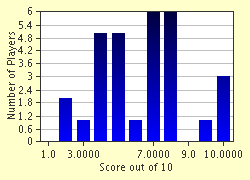Quiz Answer Key and Fun Facts
1. Which aircraft manufacturing company developed the Swordfish?
2. Although a lot of Swordfish in World War II were operated by the Royal Navy's Fleet Air Arm some did see service with the Royal Air Force. Which of the RAF's commands did nearly all Swordfish operations fall under?
3. According to Swordfish doctrine what was the ideal altitude for a torpedo to be dropped?
4. The Mark II Swordfish had strengthened wings which had been adapted so it could carry what weapon system?
5. In which Italian harbour did Swordfish aircraft attack the Italian fleet, sinking one battleship and disabling two others?
6. The Mark IV Swordfish was the only version with an enclosed cockpit and was developed for use by the air force of which country?
7. A Swordfish from HMS Ark Royal was involved in the sinking of which German battleship in May 1941?
8. Which engine manufacturer made the 'Pegasus' engines that were commonly used by Swordfish aircraft?
9. How many Swordfish survived the infamous 'Channel Dash' attack against a German Naval Squadron in February 1942?
10. At an altitude of 5000 feet and carrying a torpedo what was the top speed of a Mark I Swordfish?
Source: Author
The_Cyclist
This quiz was reviewed by FunTrivia editor
bloomsby before going online.
Any errors found in FunTrivia content are routinely corrected through our feedback system.

